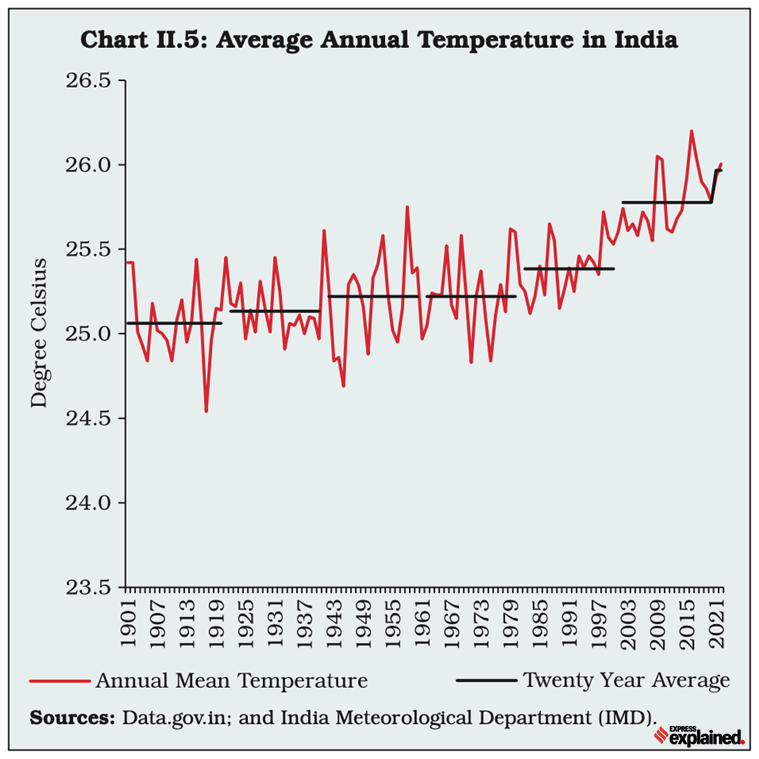Climate Change in India
Impact of climate change on India: A deep analysis
Climate change is one of the most pressing challenges facing the world today, and India is one of the countries that is most vulnerable to its impacts. The country is already experiencing rising temperatures, more extreme weather events, and changes in rainfall patterns. These changes are having a devastating impact on India's economy, environment, and people.Economic impacts
The economic impacts of climate change on India are likely to be severe. The country is heavily dependent on agriculture, which is particularly vulnerable to climate change. Rising temperatures and changes in rainfall patterns are already causing crop failures and reducing agricultural productivity. This is having a major impact on India's economy, as agriculture accounts for a significant portion of GDP and employment.In addition, climate change is also impacting other sectors of the Indian economy, such as tourism, energy, and infrastructure. Sea level rise is threatening coastal communities and infrastructure, while more frequent and intense storms are causing damage to property and crops. Climate change is also making it more difficult and expensive to generate and distribute electricity.
Environmental impacts
Climate change is also having a significant impact on India's environment. The country is home to a diverse range of ecosystems, many of which are already under threat from climate change. For example, the Himalayan glaciers are melting rapidly, which is reducing the availability of freshwater and increasing the risk of flooding.Climate change is also causing sea levels to rise, which is inundating coastal areas and displacing people. In addition, climate change is making it more difficult to manage India's natural resources, such as water and forests.
Social impacts
The social impacts of climate change on India are also likely to be severe. Climate change is already exacerbating existing problems such as poverty, hunger, and malnutrition. It is also increasing the risk of climate-induced displacement and migration.Climate change is also having a negative impact on human health. Heat waves are becoming more frequent and severe, and this is leading to an increase in heat-related illnesses and deaths. Climate change is also spreading vector-borne diseases such as malaria and dengue.
Conclusion
Climate change is a major threat to India's future. The country is already experiencing the impacts of climate change, and these impacts are likely to become more severe in the future. It is important that India take steps to adapt to climate change and reduce its greenhouse gas emissions.What can be done?
There are a number of things that India can do to adapt to climate change and reduce its greenhouse gas emissions. These include:- Investing in renewable energy sources such as solar and wind power.
- Improving energy efficiency in buildings and industry.
- Promoting sustainable agriculture practices.
- Protecting and restoring forests.
- Developing early warning systems for extreme weather events.
- Strengthening social safety nets to help people who are vulnerable to climate change.
India is already taking some steps to adapt to climate change and reduce its greenhouse gas emissions. However, more needs to be done in order to address the challenges posed by climate change. The Indian government, businesses, and individuals all have a role to play in combating climate change and building a more sustainable future for India.



Comments
Post a Comment